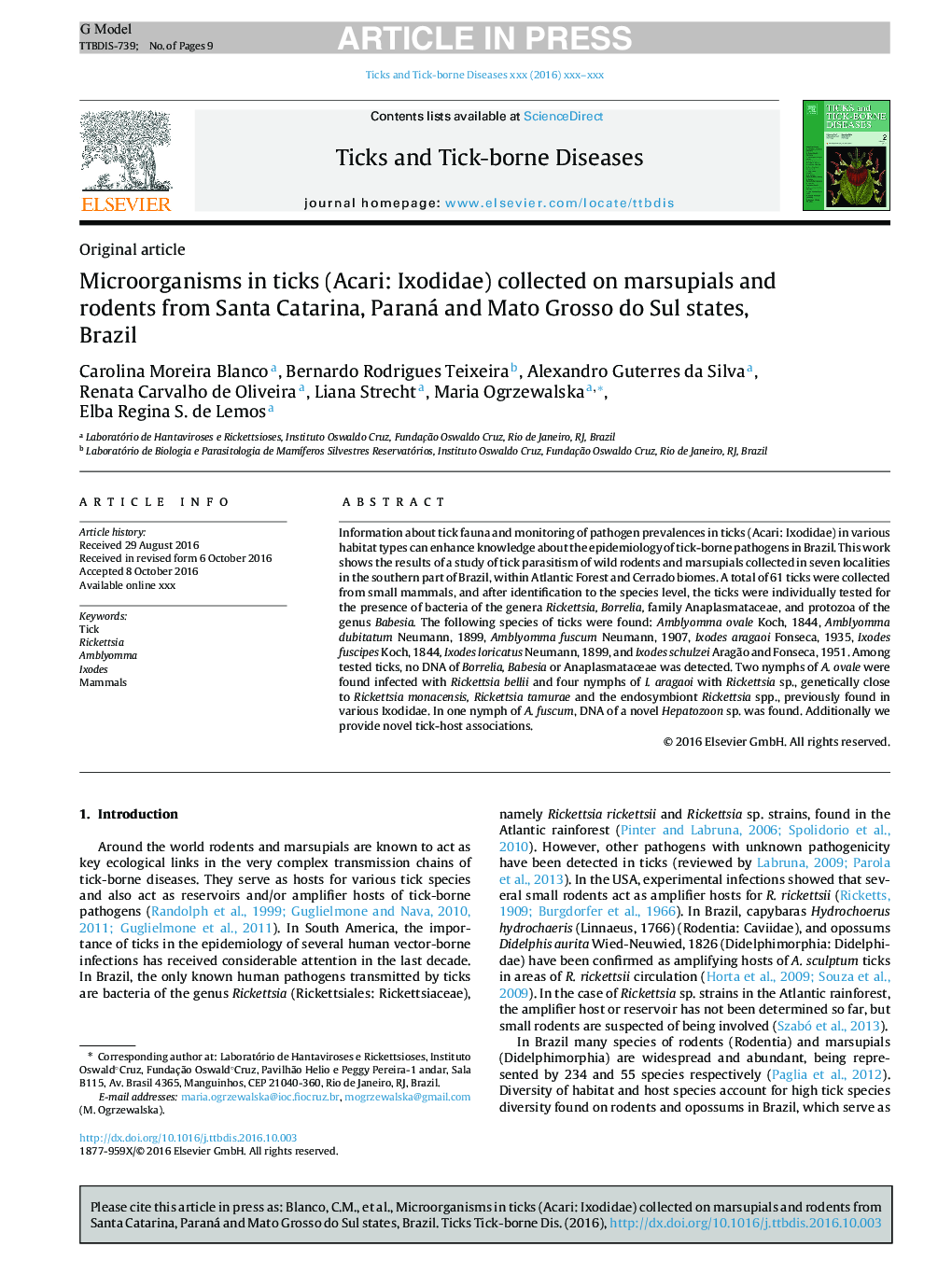| Article ID | Journal | Published Year | Pages | File Type |
|---|---|---|---|---|
| 5546450 | Ticks and Tick-borne Diseases | 2017 | 9 Pages |
Abstract
Information about tick fauna and monitoring of pathogen prevalences in ticks (Acari: Ixodidae) in various habitat types can enhance knowledge about the epidemiology of tick-borne pathogens in Brazil. This work shows the results of a study of tick parasitism of wild rodents and marsupials collected in seven localities in the southern part of Brazil, within Atlantic Forest and Cerrado biomes. A total of 61 ticks were collected from small mammals, and after identification to the species level, the ticks were individually tested for the presence of bacteria of the genera Rickettsia, Borrelia, family Anaplasmataceae, and protozoa of the genus Babesia. The following species of ticks were found: Amblyomma ovale Koch, 1844, Amblyomma dubitatum Neumann, 1899, Amblyomma fuscum Neumann, 1907, Ixodes aragaoi Fonseca, 1935, Ixodes fuscipes Koch, 1844, Ixodes loricatus Neumann, 1899, and Ixodes schulzei Aragão and Fonseca, 1951. Among tested ticks, no DNA of Borrelia, Babesia or Anaplasmataceae was detected. Two nymphs of A. ovale were found infected with Rickettsia bellii and four nymphs of I. aragaoi with Rickettsia sp., genetically close to Rickettsia monacensis, Rickettsia tamurae and the endosymbiont Rickettsia spp., previously found in various Ixodidae. In one nymph of A. fuscum, DNA of a novel Hepatozoon sp. was found. Additionally we provide novel tick-host associations.
Keywords
Related Topics
Life Sciences
Agricultural and Biological Sciences
Animal Science and Zoology
Authors
Carolina Moreira Blanco, Bernardo Rodrigues Teixeira, Alexandro Guterres da Silva, Renata Carvalho de Oliveira, Liana Strecht, Maria Ogrzewalska, Elba Regina S. de Lemos,
